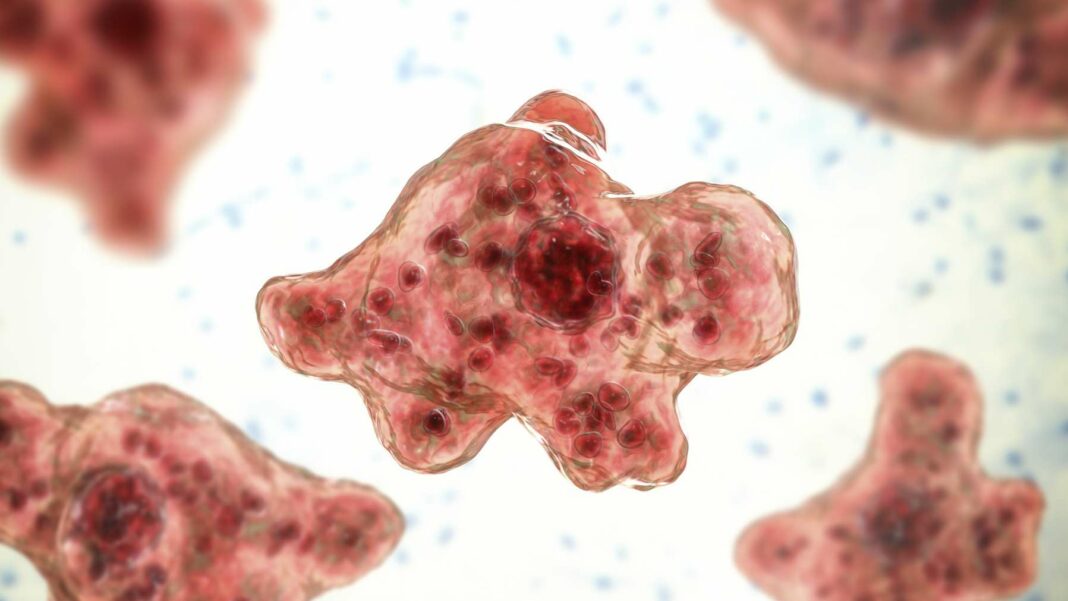Recent research has identified a giant virus from a wastewater treatment facility near Vienna that may help combat Naegleria fowleri, a deadly amoeba causing severe meningitis. This Naegleriavirus, part of the Mimivirus subfamily, infects the amoeba, leading to its destruction while utilizing its cellular machinery for replication. The findings suggest potential strategies for developing treatments against this pathogen and improving water purification techniques, highlighting the need for further exploration of this unique virus.
Discovering a Potential Ally in the Fight Against Deadly Diseases
Recent research has unveiled a giant virus that may serve as an unexpected ally in combating a life-threatening ailment. Isolated from a wastewater treatment facility near Vienna, this remarkable virus stands out due to its significant size and complexity. It targets Naegleria fowleri, a single-celled organism responsible for a nearly always fatal form of meningitis in humans, for which effective treatment options are currently lacking. The identification of this new Naegleriavirus could signify a pivotal advancement in medical science.
The Unique Characteristics of Giant Viruses
Giant viruses represent a fascinating category in the viral world; they are comparable in size to bacteria and possess an extraordinarily large genome. Some can even carry nearly the entirety of the genetic material required for protein synthesis. These viral giants typically thrive in environments such as oceans, freshwater bodies, and wastewater treatment plants, where they infect amoebae and single-celled algae. Notably, researchers have also discovered a remarkable variety of these viruses in forest soils.
The newly identified Naegleriavirus is just one of several giant viruses sourced from the Klosterneuburg wastewater treatment plant. According to Patrick Arthofer from the University of Vienna, this is the fourth variant of giant virus found at this site, and it belongs to the Mimivirus subfamily of Klosneuviruses. Subsequent analyses revealed that it contains an unusually lengthy double-stranded DNA sequence, comprising 1.16 million base pairs that encode at least 59 viral proteins and 31 genes related to the cellular translation machinery.
Interestingly, this giant virus infects Naegleria, specifically the ‘brain-eating amoeba’ Naegleria fowleri. The Naegleriavirus tricks these amoebae into consuming it as food, leading to their destruction within a few hours. During this process, the virus injects its DNA into the host cell, establishing a production facility for new virus particles. Co-author Florian Panhölzl explains that the Naegleriavirus likely employs specific proteins to suppress the amoeba’s immune response, ensuring the host cell remains functional long enough for the virus to replicate before it ultimately succumbs.
The implications of this discovery are profound. By targeting Naegleria single-celled organisms, the Naegleriavirus could pave the way for innovative strategies to combat the deadly Naegleria fowleri pathogen. The researchers suggest that this may be the first step towards developing a viral counteragent specifically aimed at this dangerous organism. Given that Naegleria fowleri predominantly inhabits warm, human-altered waters and swimming pools, these giant viruses may even find applications in preventive measures for water purification. However, further research is necessary to explore these possibilities, as noted by Matthias Horn, a colleague of Arthofer. The ongoing study of this newly discovered virus will significantly enhance our understanding of Naegleria biology and its interactions with viral entities.
